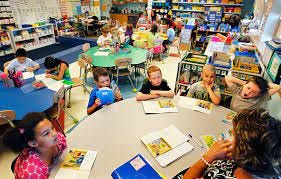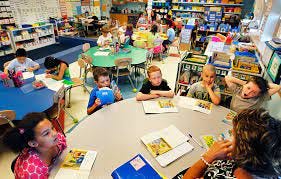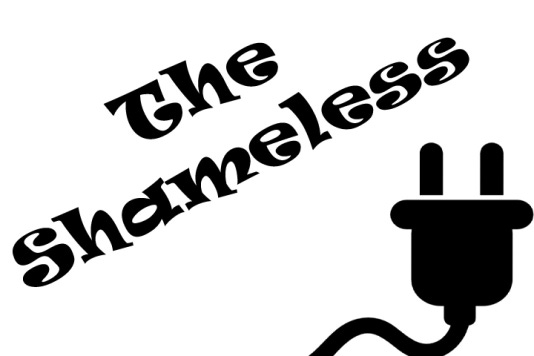Photo Credit: New York Times
Issue #219 Education January 11, 2023
As many of you know, I am a retired educator of all grades from Pre-K through university levels. Although throughout my decades of teaching and educational consulting my students, clients, and I never dealt with something as major as a global pandemic, I have dealt with all kinds of issues pertaining to how students learn best.
Every student learns differently and every home situation is also different.
Although the “pandemic” part of COVID is all but over, COVID is still with us. Many students lost almost an entire year of class time during the 2021-2022 school year, on top of the necessary school closings during the last quarter of the 2019-2020 school year.
So now as we start the 2nd half of the 2022-2023 school year, parents and teachers must still work hard to help students get back to a normal school day and school year.
Although vaccines and boosters are available for all ages and for all of the COVID variants known up to last fall, not enough people are vaccinated or following COVID mitigation protocols. Some school districts have advised that teachers and students go back to wearing masks during the school day.
The article continues below.
No intrusive ads or annoying popups ever! Instead, please see the important information below and at the bottom of this post. That’s how we grow and sustain this publication. AND, please keep those “Likes” and comments coming! Thanks!
There is new lower pricing for the paid levels!
Paid subscribers with the Substack app are invited to participate in the W.A.S. Chat Room to discuss today’s post.
All posts are free for seven days after their publication. To read all older posts, including the complete archive, and to support us financially, please consider upgrading your subscription to a paid level. Save 17% with an annual subscription. Thank you for your support!
The article continues…
Five Ways to Help Students Successfully Transition After COVID
Every student, every family, every school, and every school district is different. But here are some universal recommendations:
Students of all kinds need routine and structure. When schools had to shut down and pivot to online learning almost overnight, it was jarring for everyone involved. Some students like my grandson were lucky enough to have home supervision and access to computers or tablets and high-speed internet, but most were not so lucky. Also like my grandson, some students could work independently, but many students need more guidance than can be given through a computer screen. Now that regular classes have resumed, it will be helpful to have the school day and the individual classrooms be as “normal” and structured as possible, with or without computer usage.
Let students continue to process and re-evaluate the isolation they experienced during the pandemic. Just like adults, some students are introverts and don’t mind being alone, and some are extroverts and didn’t deal with being without their classmates for over a year. Both my husband and I are introverts. We live in a large enough house that each of us could work from our own home office space. But after a few months of being at home just with each other, even we got tired of not seeing other people. As convenient as Zoom calls can be, they just don’t take the place of face-to-face interaction. As students return to class on a full-time basis, many of them may have to re-learn the social norms and practices of being around and working with their teachers and other students. This will take time and patience.
Planning for inclusion and re-integration of differing levels Students who had effective access to technology at home and online learning may have progressed well in their studies during school-at-home periods, while other students with no, or limited access, and/or students with additional learning needs, may have made limited progress. Students will know who is behind and who is ahead, and the need to differentiate classroom learning experiences is greater than it already was pre-COVID. Every student’s level of confidence and personal perception should be taken into account. Teaching students empathy towards each other and self-realization of their skills and needs will be very important.
Returning to school will be a joyous occasion for some (like my grandson), but very stressful for others.
Many teachers are working hard on building a community within their classrooms and schools while simultaneously making space for managing the trauma that may still be present and erupting at any time.
Working hard to listen to each student and helping with the adjustment will go a long way toward getting students to adjust, catch up, and thrive post-COVID.
Are you a teacher or a parent of children returning to school after the shutdowns? How have you and others dealt with the changes? Let us know in the comments of let’s discuss this in the W.A.S. Chat Room (for paid subscribers only).
Help us to grow our We Are Speaking Substack!
Don’t Forget! If you have the W.A.S. app for iOS and Android, you can listen to each article by clicking the little headset icon. You can also participate in the W.A.S. Chat (for paid subscribers only).
There are many benefits to using the W.A.S. app, including the ability to listen to our posts and podcast episodes straight from the app.
Paid Subscribers: Join us in the new W.A.S. Chat!
Have you thought about starting a Substack publication of your own? It’s quick, easy, and free!
I am concentrating much more on my Instagram account. Please click the link to follow me on my ‘Gram.
I am also now on the new, left-leaning, and easy-to-use “Bird Alternative” blogging site called POST. You can follow me there. (Your wait to be admitted will be much shorter than the usual week or so with my dedicated invite below…)
You can always leave any questions in the comments or email us.
Free posts are available for 7 days after publication. Adjust or upgrade your subscription to the paid level here. Pay less than 14¢ per post per month for the 36 monthly articles and podcast episodes. Thank you for your financial support!
Read Detroit Stories Quarterly by Keith Owens, et al.
Check out the Global Creative Community Branding and Marketing Academy (GCC BMA) offering courses and group coaching for independent writers and creative and solo professionals.





